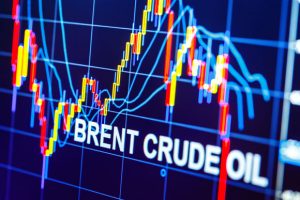We haven’t seen the end of this oil price rise
The perennially bullish Goldman Sachs is not alone in predicting a higher oil price.
A recent report by the Boston Consulting Group asks the question, “are we on the cusp of a new supercycle?”
In BCG’s opinion? We are.
You want more MetalMiner on your terms. Sign up for weekly email updates here.
Bullish on the oil price
Hedge funds on the whole agree.
By a factor of 6-to-1, bullish long petroleum positions outnumbered bearish short ones on the NYMEX and ICE WTI contracts, according to Reuters.
Net long positions climbed to 919 million barrels, the highest since January 2020, before the pandemic took hold, and prior to that October 2018, before the trade war between the United States and China intensified, the post reports. Demand exceeds supply, which is constrained by OPEC discipline and a subdued US shale market.
In previous oil price rises, shale production has responded rapidly, lifting drilling within months and output inside of a year. However, this time around, those producers that survived the last crunch have chosen to repair their balance sheets rather than borrow and burrow.
Oil majors have also chosen to cut back capex strongly. Some are funnelling funds into low-emission options rather than opening new fields.
Recovering demand boosts oil price
Demand has bounced back strongly. The vaccine rollout has lifted sentiment while a global manufacturing and construction boom is encouraging heavy consumption of other middle distillates, Reuters reports. Demand is recovering fast despite restrictions on international passenger aviation continuing to limit consumption of jet fuel.
The downside, though, could be supply.
OPEC is showing remarkable restraint. Members are happy to see oil prices rise. OPEC+ members, like Russia, are on the whole currently playing along.
But wild cards remain a risk on the supply side.
Iran is said to be nearing a deal with the US on its nuclear program. The quid pro quo there would be an early easing of sanctions and a resumption of oil exports. To some extent, the market has priced this in. However, it remains bullish all the same. So, a resumption of Iranian shipments would likely not signal a price collapse. It could simply slow the further build in long positions.
The supercycle question
BCG, however, is not predicting a long supercycle like we had after the 2008 financial crisis that led to a 6-year boom in prices but was preceded by a 20-year underperformance in capex investment.
This time, BCG sees a short 18-month surge in demand on the back of pandemic recovery and the relatively short two-year low investment window. It sees pent-up savings being a factor in driving a short-term surge in demand.
According to the International Monetary Fund (IMF), the global economy will grow by 6% this year and by about 4% in 2022. The U.S. could possibly hit 8% this year, its highest since the 1950s.
In a constrained — albeit largely artificially constrained — oil market, that recovery will add impetus to oil prices. The market could tighten further and the supply side would be able to charge an ever-higher price.
Increased supply from shale is almost certain to come at some stage, providing it is not choked off by overly ambitious environmental restrictions. While it is unlikely to be on the scale or speed of before, much has been learned both operationally and technologically. In short, that means it would be done better and cheaper.
Energy-intensive users may want to factor elevated oil prices into their annual predictions. That will be true, even as the world transitions to a low-carbon future.
We are going to be reliant on oil for some years yet. Assuming those long positions have it right, we will face price volatility as a result.
Each month, MetalMiner hosts a webinar on a specific metals topic. Explore the upcoming webinars and sign up for each on the MetalMiner Events page.



Leave a Reply